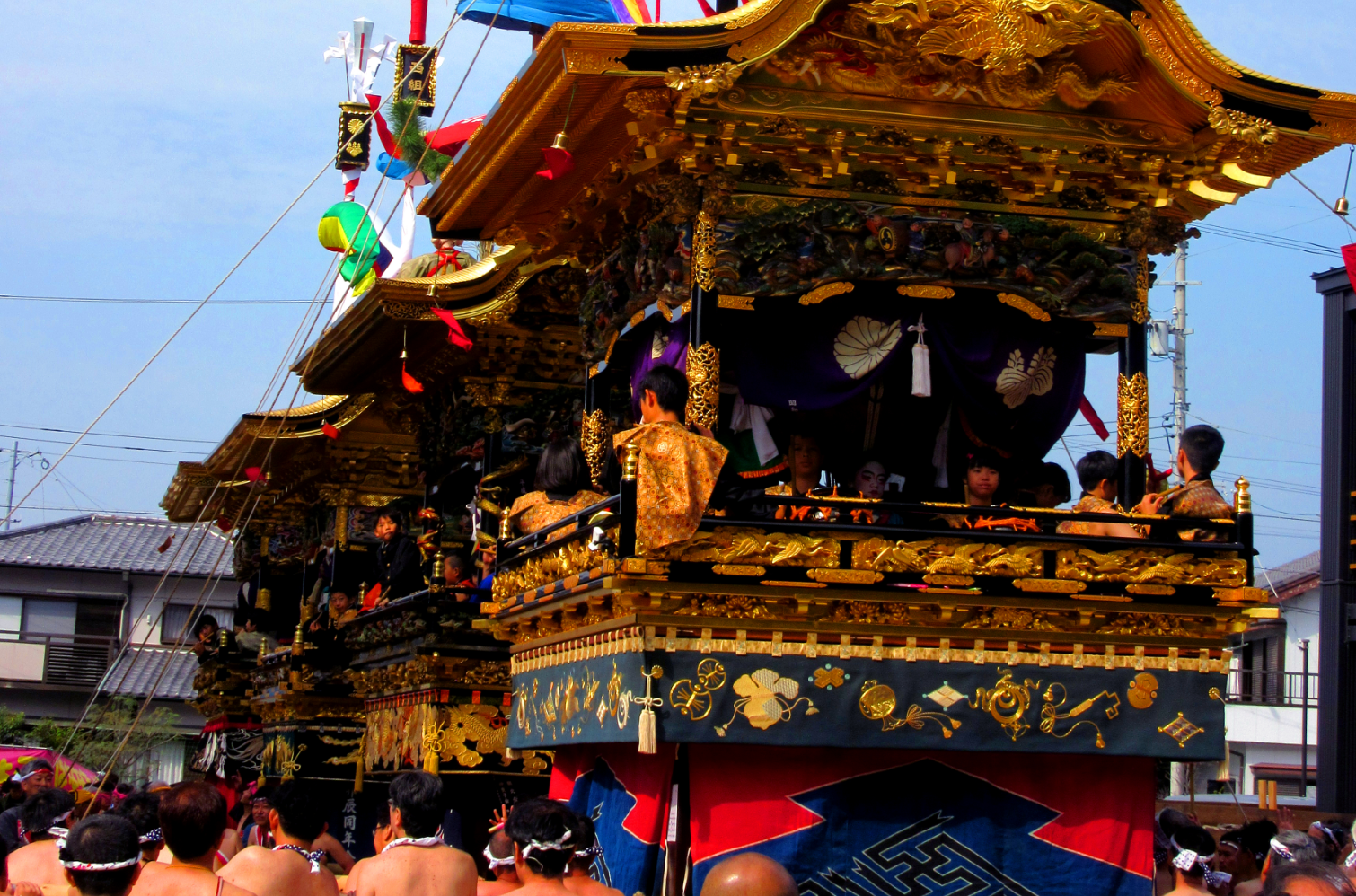Ushigami: Shinmei Shrine, Yatsuguru Shrine
Float: Ebisu floats
Kneading: kagura dance, daimyo procession, child dance
Remarks: Located in the westernmost part of Mitani, also called Nishi-Shinya
Ebisu floats
|
Construction |
1916 |
|
Size |
Width 3.45m
3.55m long
Height 5.4m
Pillar height 11.2m |
|
Cultural assets, etc. |
City designated tangible folk cultural property
(Designated on March 14, 1957) |
|
Major features |
Decorate a bamboo shoot and a sakaki with a gold ball at the end of a pillar. Ebisu dolls on the roof. |
Nishi Ward is located at the west end of Mitani-cho, on the east side of the Nishida River. In the district, Shinmei Shrine, which is said to be a recommendation for the Hakuho year, is enshrined and is the deity of Nishi Ward. In other words, Nishi Ward is a double child of Yaguru Shrine and Shinmei Shrine. Shinmei Shrine is also referred to as Shinmei Shrine because it is said that a statue launched from the sea is worshiped.
Nishi Ward is also called "Nishi Araya", and is currently one of the six wards of Mitani-cho, which counts more than nine hundred and ninety units. Mitani Festival and Shinmei Shrine are closely related. The lion head of Shinmei Shrine (called "Inkyou Kagura", which is a cultural property designated by the city and estimated to be of the Muromachi era), stayed at Yatsuguru Shrine for a trial music, and the Wakamiya festival was held the next day. This is because they will be transferred to the shrine with the portable shrine. It was also said that the festival would not begin unless "Inkyo Kagura" in Nishi Ward came.
This preservation society is in charge of the whole Nishi Ward Neri (local arts) section and the festival proceeding section dedicated to the shrine at the Mitani festival, but this role will change from the Edo period, which is said to have become the form of today’s Mitani festival It has been reached without it. It is not clear, but I heard that the festival was attended by Matsuku Ward, mainly Yatsuguru Shrine in Kami Ward, Shinmei Shrine in Nishi Ward, and Wakamiya Shrine in Higashi Ward, followed by Kita Ward and Naka Ward. Musical accompaniments and dances are unknown at any time, but I think at least when the floats were built.
|
1911 |
The Mitani Town Youth Association (Nishi Ward Branch) can be held. Up to now, festivals have been held at Wakaren and Wakashuren. |
|
1927 |
Renamed Mitanicho Youth Group (West Division). |
|
1967 |
Nishi Ward Preservation Association is formed. Since then, Nishi Ward has preserved and passed on festivals and traditional performing arts through two organizations, a preservation society and a youth group. |

















